Fenders are an essential component of any car or vehicle. They are the curved panels that sit above the wheels on the side of a car, extending from the front bumper of the car to the door. The main purpose of fenders is to keep dirt, mud, and other debris off of the tires and braking system, making them safer and more efficient.
The fender is responsible for protecting the body of the car and other vehicles on the road. If debris could flow freely from the moving tires, a lot more body damage would occur, requiring repairs. The fender is the shield that protects both the car and others near it on the road. Additionally, fenders also help to keep the car from getting too messy, which is especially important during rainy or muddy weather conditions.
What Is a Fender?
Definition
A fender is a car part that frames or covers a wheel well. It is typically made of metal, plastic, or rubber and is located above the wheels of a car, running from the bumper to the doors. The fender is an essential part of a car's bodywork, protecting the car from dirt, mud, rocks, and other debris that can be kicked up by the wheels.
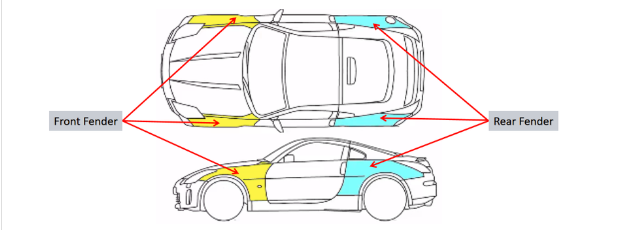
Image src: Skill-Lync.com
Functionality
The primary function of a fender is to prevent debris, rocks, mud, liquids, sand, and other road debris from getting thrown in the air while the tires rotate. In addition, fenders also help to keep the car from getting too messy. The fender blocks dust and mud from being sprayed from the tires, which means that the car needs to be cleaned less frequently.
Moreover, fenders are also able to absorb impact from minor collisions. In this way, the fender can act as an extension of the bumper in terms of its ability to absorb the energy from a collision. However, it is important to note that fenders are not designed to protect the car in the event of a major collision. In such cases, the car's safety features, such as airbags and crumple zones, come into play.
In summary, a fender is an essential car part that protects the car from debris and absorbs impact from minor collisions. It is a crucial component of a car's bodywork, and without it, the car would be more vulnerable to damage from the road.
Types of Car Fenders
Fenders are an important component of any car, as they protect the vehicle's body from damage caused by debris, water, and other external factors. There are different types of fenders used in cars, depending on the make and model of the vehicle. The two main types of fenders are front fenders and rear fenders.
Front Car Fenders
Front fenders are located at the front of the car, covering the front wheels. They are designed to protect the car's body from damage caused by rocks, dirt, and other debris that may be kicked up by the front wheels. Front fenders are usually made of metal, plastic, fiberglass, rubber, or a combination of these materials.
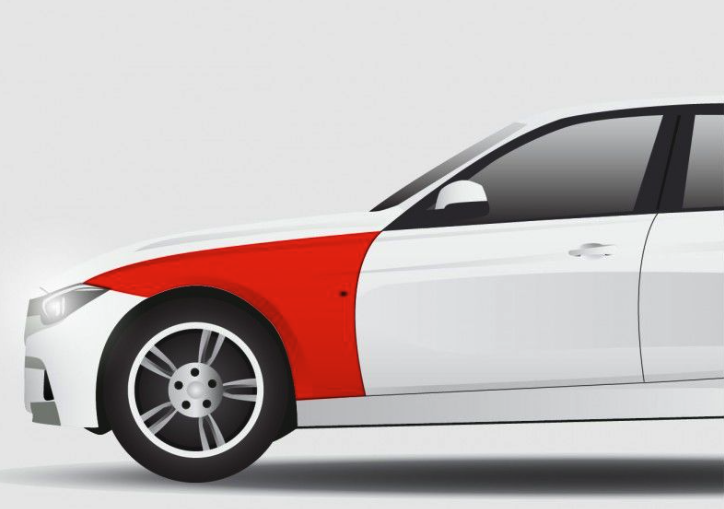
Some cars have front fenders that are integrated into the hood of the car, while others have separate fenders that are bolted onto the car's body. Front fenders may also have built-in turn signals, side markers, and other lights that help improve the car's visibility.
Rear Car Fenders
Rear fenders, also known as quarter panels, are located at the back of the car, covering the rear wheels. They are designed to protect the car's body from damage caused by rocks, dirt, and other debris that may be kicked up by the rear wheels. Rear fenders are usually made of metal, plastic, fiberglass, rubber, or a combination of these materials.
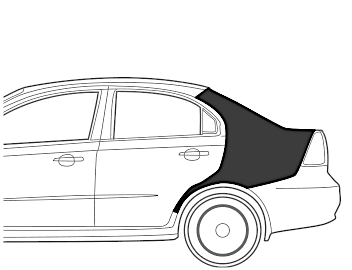
Some cars have rear fenders that are bolted onto the car's body, while others have enlarged welded-on quarter panels that serve both as the rear fender and the quarter panel. Rear fenders may also have built-in brake lights, turn signals, and other lights that help improve the car's visibility.
In summary, fenders are an essential component of any car, as they protect the vehicle's body from damage caused by external factors. Front fenders and rear fenders are the two main types of fenders used in cars, and they are made of different materials depending on the make and model of the vehicle.
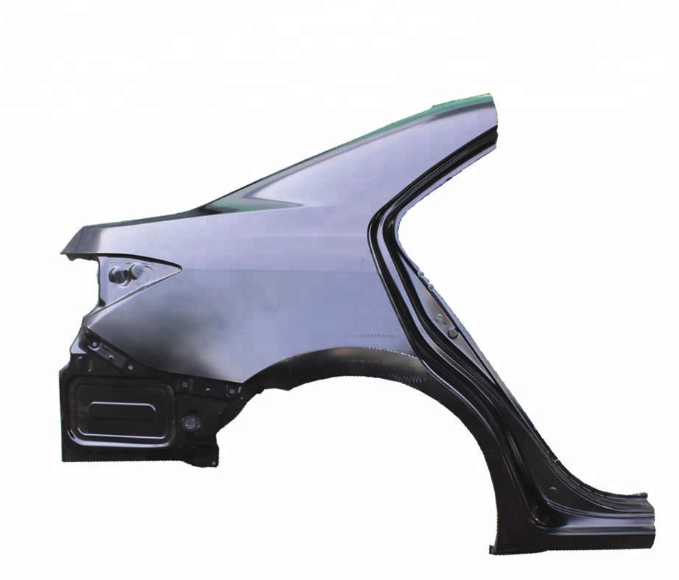
Fender Materials
Fenders can be made of different materials depending on the make and model of the car. Metallic fenders, fiberglass fenders, and plastic fenders are the most commonly used materials.
Metallic Fenders
Metallic fenders are made of aluminum or steel. They are durable and can withstand a lot of wear and tear. Metallic fenders are commonly used in heavy-duty vehicles such as trucks and SUVs. They are also used in high-end luxury cars such as Mercedes, Audis, and BMWs. Metallic fenders are more expensive than other types of fenders, but they provide better protection against road debris and accidents.
Fiberglass Fenders
Fiberglass fenders are made of a composite material consisting of glass fibers and resin. They are lightweight and durable, making them a popular choice for sports cars and racing vehicles. Fiberglass fenders are also used in some high-end luxury cars. They are less expensive than metallic fenders, but they are not as strong and can crack or break easily.
Plastic Fenders
Plastic fenders are the most commonly used fenders in modern cars. They are made of heavy-duty plastic, high-quality plastic, or thermoplastic. Plastic fenders are lightweight, durable, and affordable. They are also easy to replace if they get damaged. Plastic fenders are commonly used in economy cars, mid-range sedans, and some luxury vehicles.
In summary, fenders are an important part of any car, truck, or motorcycle. They protect the wheels and the body of the vehicle from road debris, rocks, mud, and other hazards. Metallic, fiberglass, and plastic fenders are the most commonly used materials. Each material has its own advantages and disadvantages, and the choice of material depends on the make and model of the vehicle and the preferences of the driver.
Car Fender Features
Fenders are an essential part of a car that protects the wheels and other parts from debris, mud, and other road hazards. In addition to this primary function, fenders also come with various features that enhance their performance and protect the vehicle from collisions.
Fender Flares
Fender flares are extensions that attach to the fender and provide additional coverage to the wheels. They are particularly useful for off-road vehicles that require extra protection from dirt and debris. Fender flares come in different shapes and sizes, and they can be made of plastic, metal, or rubber. They also come in different colors and can be painted to match the color of the car.

Bumper Cushions
Bumper cushions are usually made of foam or rubber and are attached to the fender to absorb the impact of a collision. They are designed to protect the car and the passengers from the force of a collision. Bumper cushions come in different sizes and shapes and can be customized to fit the specific make and model of the car.
Push Bumpers
Push bumpers are heavy-duty bumpers that are attached to the front of a car to provide additional protection against collisions. They are commonly used by law enforcement and emergency vehicles to push other vehicles out of the way during high-speed chases or emergencies. Push bumpers come in different sizes and shapes and can be customized to fit the specific make and model of the car.

Fenders can also be equipped with other features such as bullbars, grille guards, cattle pushers, and rammers. Bullbars are heavy-duty bars that are attached to the front of a car to protect the vehicle from collisions with animals. Grille guards are similar to bullbars but are designed to protect the grille of the car. Cattle pushers and rammers are heavy-duty attachments that are used to push large objects out of the way during emergencies.
Overall, fender features are essential for protecting the car and its passengers from collisions and road hazards. They come in different shapes and sizes and can be customized to fit the specific needs of the vehicle.
Fender Maintenance and Repair
Fenders are an important part of a car's body, protecting the wheels and tires from dirt, debris, and other road hazards. However, they are also prone to scratches, dents, and damage from fender-benders. Regular maintenance and repair can help keep your fenders in good condition and extend their lifespan.
Replacing a Fender
If your car has severe fender damage, it may be necessary to replace the entire fender. This is a job that is best left to a qualified mechanic or body shop. They will have the tools and expertise needed to remove the damaged fender and install a new one.
Replacing a fender can be an expensive repair, especially if it involves replacing the quarter panel as well. However, it is important to have it done correctly to ensure the safety and integrity of your vehicle.
Fender Cover
One way to protect your fenders from scratches and minor damage is to use a fender cover. These covers are made from a soft, protective material that is designed to fit over your fenders and protect them from scratches and dents.
Fender covers are especially useful if you are working on your car and need to lean over the fenders. They can also be used during routine maintenance to protect your fenders from accidental scratches and damage.
Fender-Bender
If you are involved in a fender-bender, the damage to your fender may be minor or severe. In some cases, the fender may be repairable with a few minor repairs. In other cases, it may need to be replaced entirely.
Minor scratches and dents can often be repaired with a little bit of sanding and touch-up paint. However, severe damage may require more extensive repairs, such as welding or replacing the entire fender.
In any case, it is important to have your fender inspected by a qualified mechanic or body shop to determine the extent of the damage and the best course of action for repair.
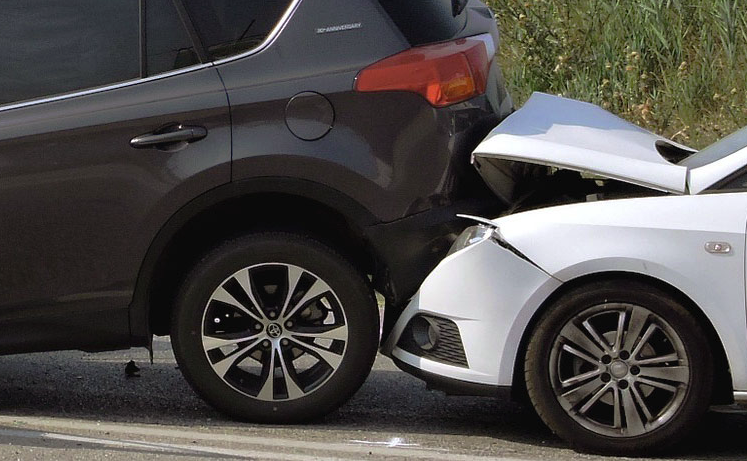
In conclusion, regular maintenance and repair of your car's fenders can help keep them in good condition and protect your vehicle from damage. Whether you need to replace a fender, use a fender cover, or repair damage from a fender-bender, it is important to work with a qualified mechanic or body shop to ensure the safety and integrity of your vehicle.
Fender and Car Safety
Fenders are not just a decorative part of a car, but they also play a crucial role in ensuring the safety of the vehicle and its occupants. Here are some of the ways in which fenders contribute to car safety:
Impact and Collision
Fenders are designed to absorb the impact of collisions and protect the car's body and its occupants. During a collision, the fenders absorb some of the kinetic energy, reducing the force of the impact on the rest of the car. This helps to prevent damage to the engine, transmission, and other vital components of the car, which can be costly to repair or replace.
Aerodynamics
Fenders also play a role in the aerodynamics of a car. They are designed to reduce air resistance and improve the car's fuel efficiency. A well-designed fender can help to direct air around the car, reducing drag and improving the car's overall performance.
Pedestrian Safety
Fenders also contribute to pedestrian safety. They help to prevent debris and other road hazards from being thrown up by the car's tires, reducing the risk of injury to pedestrians and other road users. In addition, some fenders are designed to crumple on impact, absorbing the force of the collision and reducing the risk of injury to pedestrians.
Overall, fenders are an essential part of any motor vehicle, providing protection against accidents and improving the car's overall safety. By absorbing the force of impacts, improving aerodynamics, and reducing the risk of injury to pedestrians, fenders play a crucial role in ensuring the safety of the vehicle and its occupants.
Fender and Wheel Interaction
When it comes to a car's fenders, their interaction with the wheels is crucial. Fenders are designed to protect the vehicle's wheels and tires from road debris, but they also play a role in the overall performance of the car.
Tires and Fenders
The relationship between a car's fenders and tires is one of protection and support. Fenders keep debris from flying up and damaging the tires, while also providing a barrier between the tires and other parts of the car. In addition, fenders can also help to improve the aerodynamics of the car, reducing drag and increasing fuel efficiency.
However, it's important to note that the size and shape of a car's tires can impact how they interact with the fenders. For example, larger tires may require larger fenders to provide adequate protection, while smaller tires may allow for more clearance between the fender and the wheel.
Wheel Well Clearance
Another important aspect of the interaction between fenders and wheels is wheel well clearance. This refers to the amount of space between the wheel and the fender, and it can impact the car's overall performance.
If there isn't enough clearance, the wheel may rub against the fender, causing damage to both the tire and the fender itself. On the other hand, too much clearance can result in a less stable ride, as the wheel may move around more than it should.
To ensure proper wheel well clearance, car manufacturers carefully design the size and shape of both the fenders and the wheels. This ensures that there is enough space for the wheel to rotate freely without rubbing against the fender.
In conclusion, the interaction between a car's fenders and wheels is an important aspect of its overall performance and safety. Fenders protect the wheels from road debris and provide support, while proper wheel well clearance ensures a stable and smooth ride.
Fender and Mud Interaction
Fenders play a crucial role in protecting the car from mud, debris, and other road debris that can be thrown up by the tires. This section will explore the interaction between fenders and mud, with a focus on mud and debris protection and water shielding.
Mud and Debris Protection
Fenders are designed to keep mud, rocks, and other debris from being thrown around by the tires, which can cause damage to the car's body, paint, and other parts. The fender is a housing for the wheels that keeps road debris contained, preventing it from hitting other vehicles or pedestrians on the road.
Mud and debris can accumulate on the fenders over time, which can lead to corrosion and other types of damage. Regular cleaning and maintenance of the fenders can help prevent this from happening. This can be done using a soft cloth and a mild detergent, or by taking the car to a professional car wash.
Water Shielding
In addition to protecting the car from mud and debris, fenders also help shield the car from water. Water can cause damage to the car's body, paint, and other parts, especially if it is allowed to accumulate in certain areas.
Fenders are designed to channel water away from the car's body, helping to prevent damage. This is done using a series of channels and grooves that are built into the fender. These channels and grooves are designed to direct water away from the car's body and towards the ground.
Regular cleaning and maintenance of the fenders can help ensure that they are functioning properly and providing adequate protection from water and other types of road debris.
Overall, fenders play an important role in protecting the car from mud, debris, and water. Regular cleaning and maintenance of the fenders can help ensure that they are functioning properly and providing adequate protection.
Fender and Paint Interaction
The fender is an essential component of a car that plays a crucial role in protecting the vehicle's wheels and the braking system from debris and other harmful elements. However, the fender's interaction with the car's paint is equally important, as it can affect the vehicle's appearance and resale value.
Paint Protection
One of the primary functions of a fender is to protect the car's paint from debris, rocks, mud, and other road debris that can cause scratches, dents, and other damage. A well-designed fender can prevent these elements from hitting the car's body, reducing the need for frequent repainting or touch-ups.
Scratch and Damage Prevention
A fender's design can also impact its ability to prevent scratches and other damage to the car's paint. Fenders made of durable materials like metal or plastic can withstand minor impacts and prevent scratches, while softer materials like rubber may not provide the same level of protection. Additionally, poorly designed or improperly installed fenders can rub against the car's body, causing scratches and other damage over time.
To prevent damage to the car's paint, it is essential to choose fenders made of high-quality materials and ensure they are installed correctly. Regular maintenance, such as washing and waxing the car, can also help protect the paint and prevent scratches and other damage.
In conclusion, the interaction between the fender and the car's paint is a crucial consideration for car owners. A well-designed fender made of high-quality materials can protect the car's paint from debris and prevent scratches and other damage, ensuring the vehicle looks great and maintains its resale value.
Conclusion
In conclusion, a car fender is a crucial body kit that is attached to the sides of the vehicle. Most fenders are attached to the arches of the wheels and are used for various reasons, not just to enhance the aesthetics of vehicles.
One of the primary functions of a car fender is to protect the body of the car from debris that could flow freely from the moving tires. The fender acts as a shield that protects both the car and others near it on the road. Additionally, the fender helps to keep the car from getting too messy by preventing dirt, mud, and other debris from getting into the tires and braking system.
Apart from protection, car fenders also play a significant role in pedestrian safety. They help to prevent pedestrians from being hit by debris that may be thrown by the moving wheels. Fenders also improve the performance of the car by reducing air resistance, which increases fuel efficiency and speed.
Overall, car fenders are an essential component of any vehicle. They serve multiple purposes, including protecting the car's body and wheels, improving its performance and customization, and enhancing pedestrian safety. It is important to maintain and repair fenders to ensure that they function properly and provide the necessary protection.
